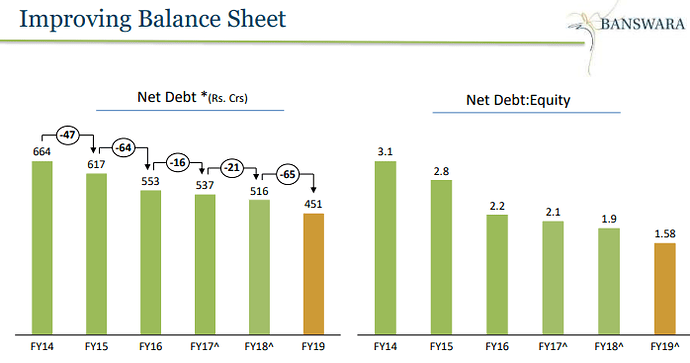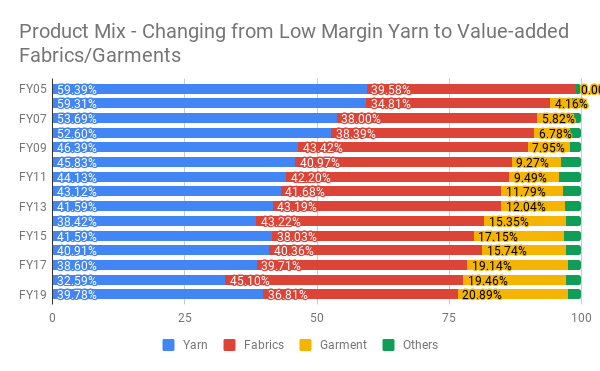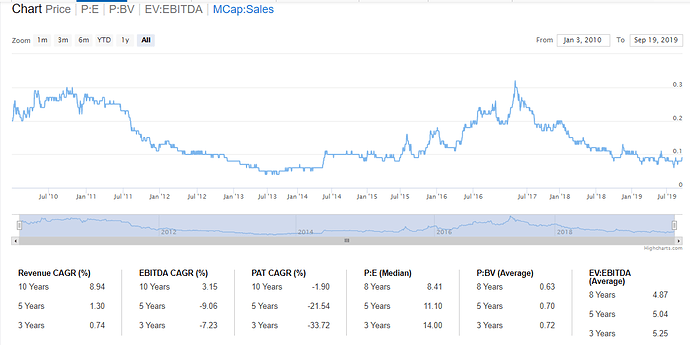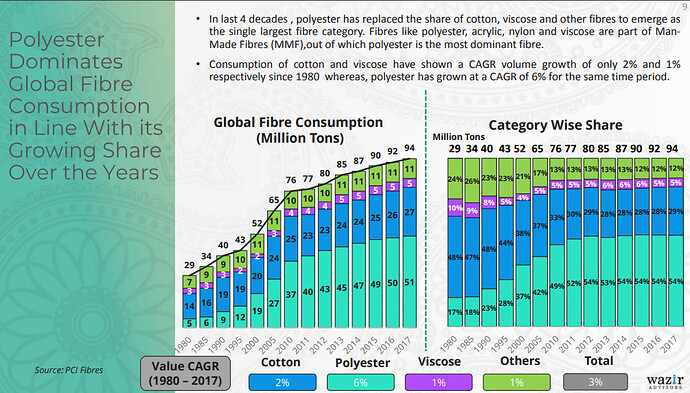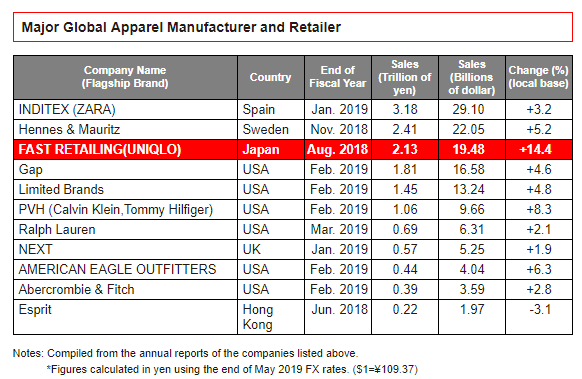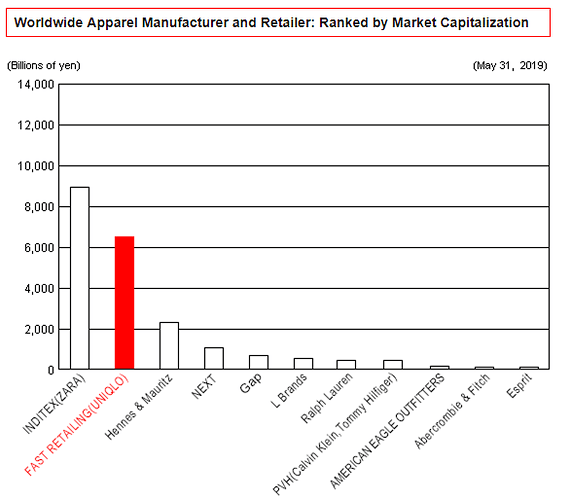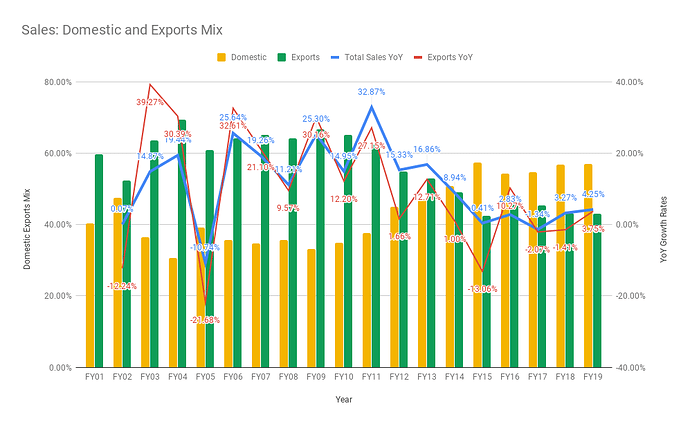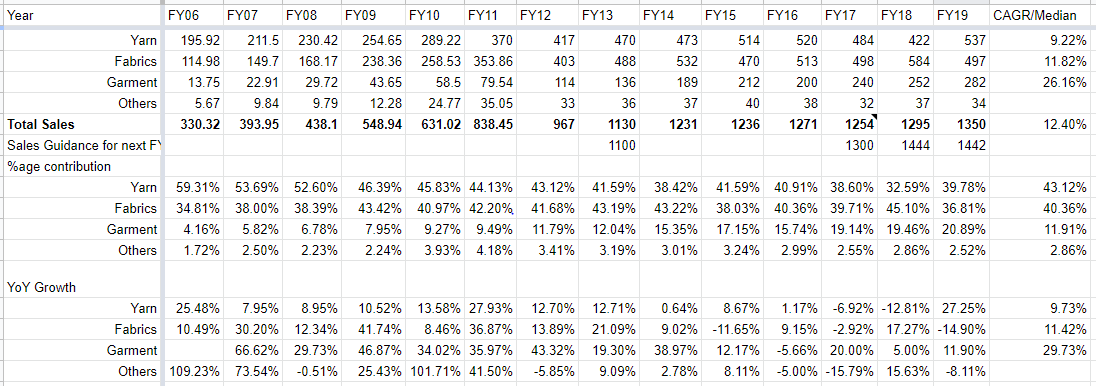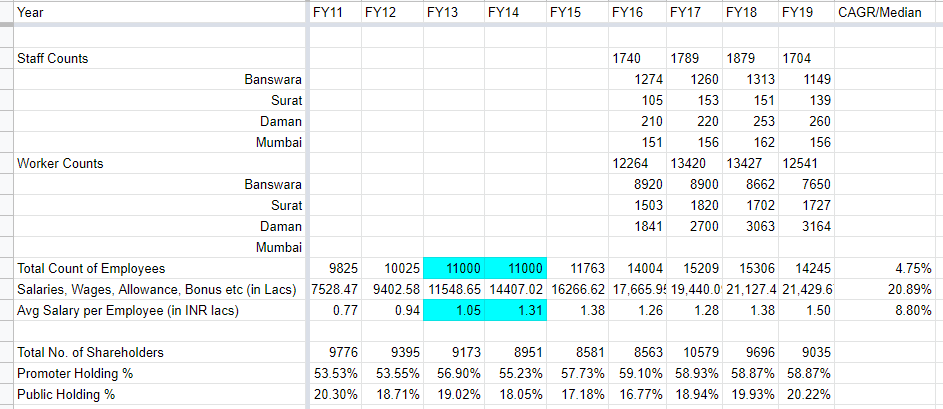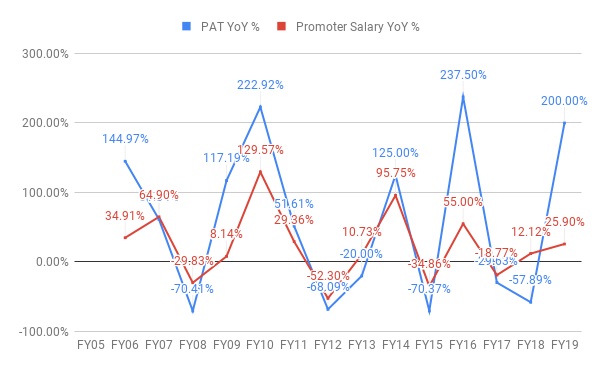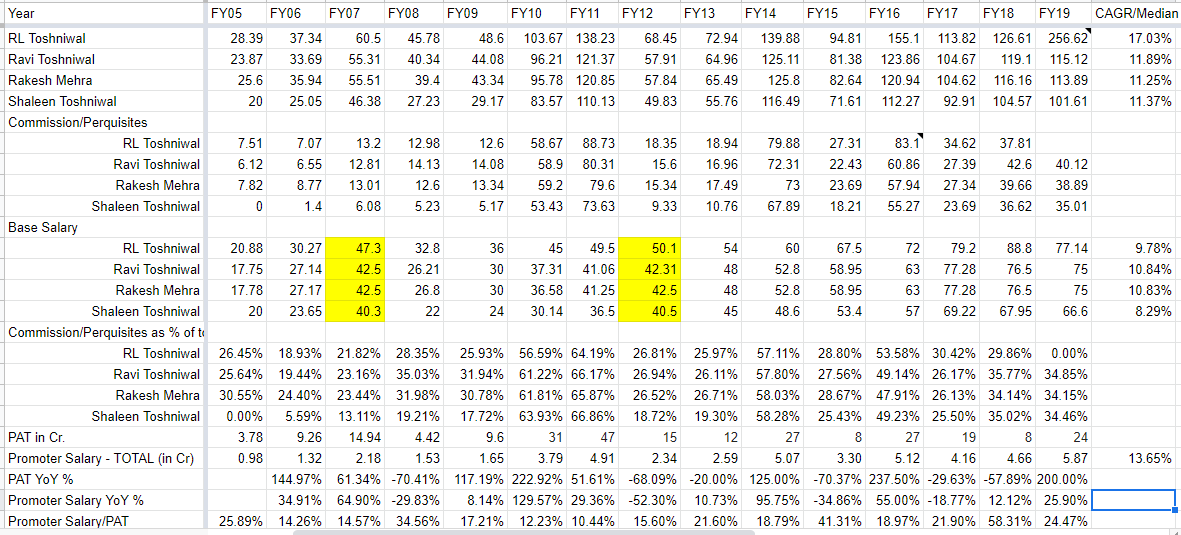IndiaMART InterMESH, India’s largest online business-to-business (B2B) marketplace for business products and services did an IPO recently which was entirely an offer for sale (OFS), priced between Rs 970 to Rs 973 per share.
IndiaMart did not receive any proceeds from the issue. Promoters Dinesh Chandra Agarwal and Brijesh Kumar Agrawal will sold 14,30,109 shares through the issue. Post the IPO, IndiaMart’s promoters holding fell to 53%, from 58% earlier. Other big investors Intel Capital (Mauritius), Amadeus IV DPF and Accion Frontier Inclusion Mauritius also offloaded some of their holdings through this issue.
5 anchor investors, included ICICI Mutual Fund, HDFC Mutual Fund, SBI Mutual Fund, Birla Mutual Fund, SAIF Partners, Hornbill Capital Advisers LLP and Malabar India.
Financials
The company has witnessed consistent growth in its revenue over the past three financial years. In FY17, the company’s revenue stood at Rs 317.8 crore, while in FY18 and FY19 it grew to Rs 410.51 crore and Rs 507.42 crore, respectively. It posted a loss of Rs 64 crore in FY17. In FY18, its adjusted profit after tax (PAT) came in at Rs 55 crore. But in FY19, it de-grew to Rs 20 crore.
In 1QFY20 the company delivered a PAT of Rs 32crs
IndiaMART had a negative net worth of Rs 390 crore as on March 31, 2017, and Rs 321.26 crore in 2018. As on March 31, 2019, its net worth had turned positive, at Rs 1,598.88 million. “Its negative net worth as on March 31, 2017, and in 2018 was primarily on account of its operating losses and net loss/(gain) on financial assets and liabilities designated at fair value through profit or loss (FVTPL) in the respective fiscal/period.
Latest Company PPT
IPO Prospectus
https://www.sebi.gov.in/sebi_data/attachdocs/jul-2018/1530686922831.pdf
Alibaba
Alibaba.com is the world’s largest global e-commerce platform for small and medium sized businesses around the world. The platform, serves more than 18 million buyers and sellers from more than 240 countries and regions, showcases products ranging from raw materials to finished goods in more than 40 industry categories. Alibaba doesn’t sell products and services itself, instead, it runs a platform that connects B2B buyers and sellers. Alibaba.com is free to join and makes most of its sales from commissions and advertising.
It is the go-to English-language platform for cross-border trade and helps small/medium businesses worldwide expand to overseas markets. The platform, which serves more than 18 million buyers and sellers from more than 240 countries and regions, showcases products ranging from raw materials to finished goods in more than 40 industry categories.
If you are a seller, you can display up to 50 products/services for free or if you get the Gold membership you get a really nice mini-site to display unlimited products or services. If you are a buyer, post what you need in a ‘Request for Quote’ and let sellers come to you.
IndiaMart
India’s largest B2B marketplace with a 60% market share. IndiaMART has 1.5 million sellers and attracts 1.6 million daily visitors. Like Alibaba, IndiaMART provides Basic and Premium membership services in which sellers can create their own homepage. showcase products online, source and contact global buyers, reply to buying leads and post offers to sell. The model and functionality is almost identical to that of Alibaba.com and like Alibaba, IndiaMART allows sellers outside of India to promote themselves.
Trade India is very similar to IndiaMart and is the second largest B2B marketplace for small and medium sized companies in India.
TradeIndia
TradeIndia launched in 1996 and is headquartered in New Delhi and claims to be the first Indian B2B marketplace to have more than 2 million registered users, of which 1.3 million are SMEs. Like Alibaba, TradeIndia provides Basic and Premium membership services in which sellers can create their own mini-site to showcase products and locate and global buyers.
# IndiaMart CEO Dinesh Agarwal On Competition From Alibaba & TradeIndia, Revenue Streams; Auctions & Marketplaces
Q. What are your key revenue streams?
Ans. We create websites, microsites and catalogs. We do a complete turn key package – designing, hosting, offering higher listing on Indiamart, Search Engine Optimization. We submit the sites to various business directories. So this is a subscription package where you know the website designing and hosting portion has become a minuscle in terms of revenue. Most of the people come to Indiamart not to have a four page microsite designed for Rs. 25,000, but because they see that there is a value in listing that they get on Indiamart platform.
Q. What kind of value adds are you offering on top of that?
Ans. On top of that there are pure advertising services which are more of a top listing, premium listing, banner advertising on a relevant category, special listing on product search. So these are value added products; We also have hundreds and thousands of micro product-specific portals for Apparels, Plastic, Chemicals etc. So we offer sectional sponsorship. We are slowly and slowly moving from a listing fee based model to a lead based model. Our initial model always contains a minimum commitment, where we gave a minimum guarantee – if you are spending Rs.25,000 with us please expet atleast 50 good enquiries in a year from the website. We’ve realized that some customers have matured enough to be able to go to pay per click or pay per lead model as well.
Q. So how do you look at it going forward now?
Ans. We launched a buy lead section, a business prospect finder section, which is mostly for lead generation section. So is a mix of things – a cataloguing plus basic listing fee that comes under subscription revenue, pure listing fees which are on the top of basic listing fees that could be premium listing and payed listing and banner advertising. Then there is a pay per lead revenue. If you see then 5-6 years back 80-90% of our business was purely cataloguing and subscription revenue only 5-10% was pure listing fee and advertising fee. Today 60-70% is cataloguing revenue and about 30% comes from purely listing and premium listing fee …you know those are experienced Internet and Indiamart users, and going forward I think that pay per lead would also become a sizeable chunk of that.
Q. From a listing based model, do you see yourself launching a marketplace like E-Lance and facilitate the entire transaction?
Ans. I don’t think that we can move to a transactional model in the immediate or medium term. , but if we take the basic concept where we can connect the buyers and sellers, without the money part – it’s the pay per lead model. That’s in the trade offer section at Indiamart.
Q. What about auctions?
Ans. As I said, the price discovery does not happen, though we tried an auction model in late 1999. What happens is that B2B is slightly different than B2C – it’s not an off the shelf product, nobody wants an off the shelf product. Most of the people have their own sizing, colours, quality parameters and the deals are not in few thousand rupees but mostly in few Lac Rupees. Buyers and sellers have to talk 5-10 times before they can settle on a price. For example, if there’s an offer to buy 50,000 pairs of socks – there someone is going to make a pitch that I can offer you one variety in 30 days for 1$, another for $1.25 or this kind for $1.3 etc, depending on quality and size. So the price discovery would not take place on a B2B Market Exchange. But I can facilitate buyer and supplier discovery, and whether they do business depends on their requirements.
Q. If you’re looking at a lead generation model, and your primary clients are the sellers – the number of leads would go down in a downturn…
Ans. Yes, but then at the same time the requirements for these leads would go up. Then the sellers who might not have been using the Internet previously but going around the world to trade fairs, would look at the possibility of using the Internet to sell their product. See the Internet finds you unknown buyers, unknown markets. We ourself as a company have discovered some market possibiities which which were strong on the internet.
Q. Like what?
Ans. Like travel. We had never ever even focussed on travel being a B2B company. We might have made a few travel websites by chance and we found that those customers were more satisfied and at that point of time we started doing a lot of marketing on travel and a significant amount of revenue started coming from it. A little more later, in terms of service we discovered that packers and movers became hot. Engineering goods also started doing very well. So we keep discovering new categories where suppliers and buyers find each other. The Tnternet throws you unknown possiblities, just by trying it out. I am sure that in this kind of a downturn lot of suppliers would come to Internet to try out different things. That may not compensate fully for the total market loss that happened because of the downturn but it ened mup making a new market for us.
Q. Talking about the competition, your success depends on the buyer base that you have. Won’t an Alibaba come in with a fairly large global database of buyers whereas you would come with a large database of sellers?
Ans. Alibaba comes in equally with a large number of suppliers from China – that is their strength and weakness both. Indian suppliers typically do not want to compete with Chinese suppliers, and they will have to do that on an Alibaba type of platform. The whole world has been looking at China as their supplier, which is why Alibaba has done so well. If the buyer preference changes, they will start logging on more to IndiaMart more because they know that AliBaba provides chinese suppliers.
Q. But then it becomes important for Alibaba to market their services in India better to develop their supplier base. Then there’s going to be competition for you to get suppliers…
Ans. Obviously, and if you really see the market size is very large. It’s a trillion dollar trade opportunity. By the entry of Alibaba, the supplier base will be more educated – more competition is more market development. If you see the example of Naukri.com and Monster both are existing together, and both are equally big. If you see China, it has an equally large player called Global Sources, Made in China, EC21 and there might be 200 smaller ones.
Q. So what about TradeIndia then?
Ans. I cannot comment on them. They are primarily a print company, while we are primarily an Internet company. See when I started I was only 1/10th of their size. Today we are probably 3 to 4 times their size. We have been consistently growing at a 50-60% rate and they must be growing at a slower rate. They must have their own set of market priorities and choices. Growth of anything below 40% is not acceptable for me, and I don’t know if in any of these years they would have achieved any of these minimum figures. So TradeIndia has always been a good follower of ours on the Internet.
# IndiaMart CEO Dinesh Agarwal On Why The Upturn Made Him Raise Funds
Q. How has the downturn impacted you?
Ans. I think the latter part of the upturn affected us more than the downturn. We were highly cashflow positive business, and towards the end of 2006-2007, there was market frenzy. Our costs were going up unnecessarily and the whole business model started to look non-feasible in the medium or the longer term. If costs were to grow at 30-40-50% growth, I didn’t see the businesses flourishing in the long run. That is when I decided to raise the money. We would never thought of raising money otherwise.
Q. Your employee cost must have gone up significantly…
Ans. Yes, that and real estate cost went up significantly during the upturn. That was the initial feeler for me that if tomorrow some serious competition came in and spent a lot of money, we would be in a crunch situation. With the downturn, the market expectation in terms of costing will come down; it will impact our customers as well, which would indirectly impact our topline. But these are the times when Internet advertising grows.
Q. How has the company been doing and how do you think the market will evolve?
Ans. IndiaMart has been a profitable company since day one. We have been growing consistently over the years, whether it was a downturn or not, within a range of anywhere between 30-40% to 65-70%. If you just compute the basic CAGR it is approximately 40-60% CAGR per year over many years. But those were times when our total revenue base itself was at a smaller size. I don’t think that many businesses were adept at using the Internet at a very large scale 4-5 years ago.
In the last 10 years, two things have happened – the Internet penetration and connectivity have become somewhat reliable and secondly, businesses have started responding to the opportunity on the Internet. The second generation has now started participating in the businesses, and an inflexion point is about to come in the Indian business Internet usage, the same way it did in China 8-10 years ago. Now I feel that at a large revenue base like ours, to maintain a growth of 40-60% over the next few years we might have to spend a larger amount of money on different activities like advertising and marketing, and a strong management team. We have not been advertising.
Q. You have had feet on the ground…lots of people in sales…
Ans. That is true. But if you want to penetrate into slightly medium and larger SMEs (Small and Medium Enterprises), a brand pull has to be created. Because we want to consolidate our position as a strong leader, it is prudent to spend a good amount of money on the market initiatives – not just do sales. We have been very strong in sales with a thousand people strong team. We also think marketing will help us attract better talent.
Q. Didn’t you sign up for BCCLs Private Treaties for the marketing?
Ans. Yes we did.
Q. So why not continue with BCCL rather than going with Intel Capital?
Ans. Intel is probably going to complement it with money. BCCL has media properties, but for a larger market pull, you need to invest across various media…and you cannot do private treaty deals with 7 different media houses.
Q. Did you have any issues with the valuations? From what we’re told, Times Private Treaties valued you rather high; So did Intel capital go for a down-round?
Ans. No it was not a down round; it was a slightly better round than that…but in terms of multiples we might have gone down because when we raised BCCL round it was at the height of 2006 and it was more of a barter deal, without cash infusions. The multiples are definitely lower this time, but we have grown to almost double our size since then, so the overall valuation is higher this time.
Q. Where is the synergy with Intel Capital? You’re a B2B marketplace…
Ans. For me, they are more of a venture capital fund. I met different venture capital companies over the last two years. Intel matched better with us, they had a longer horizon, and are less impatient than some of the pure VC firms. Some of them think that you have to burn faster to run faster . Somehow my companys DNA does not match with that, we have been a slow, steadily growing company. We are not at that stage where we are a small company, and we not do need a day to day guidance. I mean, we have been able to grow sustainably to a thousand people team.
Q. So where is the exit for Intel Capital?
Ans. I would say that IPO would be an exit for them, or an M&A possibility, but that is not going to be any time soon.
# No Single Category Contributes More Than 10% To Our Revenues - IndiaMart CEO Dinesh Agarwal
Q. What are your expansion plans?
Ans. There are 2-3 things: We have started to utilize our database of SMEs (Small and Medium Enterprises) to expand our offerings. We participate in almost 150 trade fairs across the world – half of them in India, half outside – and end up spending almost a million dollars per year on that. To strengthen our buyer relationships we came out with a sourcing guide or a buyers guide, which lists our clients, and has additional advertising for revenues. That also brings buyers back to IndiaMart.com as a platform for updated information. Most of the big companies in our space have been print Yellow Pages initiatives that have gone to the Internet. For us, going to Print is a buyer acquisition strategy, and there can be other media like mobile and Interactive TV going forward.
The other is a geographical expansion – we cover about 60-100 cities from 25 offices across india, and we want to penetrate deeper and broader into Indian territories, going into Tier 2 and Tier 3 cities as well. We might even look at international opportunities.
Q. What is the kind of dependency do you have on specific categories?
Ans. Our dependency on any particular category is low. No single category contributes more than 10% to our revenues. That is the precise reason why we have been able to survive different types of market situations.
Q. What is the range, in terms of the revenues, of the sellers in your platform?
Ans. Around 90% of them range from from Rs. 50 lakhs to Rs. 50 crores…probably 60% range from Rs. 1-10 crore range. Most of them are small and medium enterprises, with small scale companies having a larger share.
Q. How do you see this mix evolving, as you increase marketing spends and roll out your expansion plans?
Ans. Two different things will happen – one is that obviously the small is going to have the larger share, but with our marketing spends, I see a slightly larger size of SMEs coming on board with us; these are normally late in adopting any kind of technology because of their corporative structures. We think middle and slightly larger SMEs will become the part of our database.
Our entry level services start at Rs. 20-25,000, but there are lot of customers who pay us in excess of Rs. 1 or 2 lakhs per year. The growth would probably happen in all the segments parallely, but we expect that a larger chunk of medium sized enterprises will contribute higher revenue and a large number of small suppliers that would contribute to the data base.
Q. Makes me wonder…how did you start out? How did you get your first client?
Ans. When we started out, we collected association directories, from Federation of Indian Exporters, Ph.D. Chambers of Commerce, CII and attended certain Trade Fairs…we collected the data and sent mails and bulk faxes to them. We started as a website making company, and the IndiaMart market place came much later – the marketplace was a by-product of the website making business. Because I was making businesses websites and I thought it would be a prudent to keep on making a directory of business websites.
So the first few clients that we attracted were primarily for website making. Nirula’s, one plastic wholesaler, one leather exporter were some of the first clients that we started with. I am proud to say today that Nirula’s is still with us after 12 years. We were the first ones that accepted credit cards on Nirula’s website in India. Theirs was a single page website and then we launched Nirulas.com. Others include Jindal steel, the Triveni group, and also some exporters.
The mix changed during 1998-99 when inbound travel and tourism took off. We were making websites for Indian Travel Agencies and Tour Operators, and much of our revenue at that time was from inbound tour operators in Delhi, as inbound tourism is concentrated around Delhi. I think it continued till September 11th, 2001, and after that once the travel market went down the drain. By then, our B2B marketplace was matured enough, and took a fast growth path. In 2006 we claimed 10,000 clients.
Q. When talking to customers during the initial stages, what did you pitch to them?
Ans. We pitched to them a website and a business through the website – we always knew that Internet would be used to generate business through searching from AltaVista and Yahoo. There were very few Indian websites at that point of time – if you searched for a “Restaurant in Delhi”, Nirula’s website or “leather exporter in India”, our websites would show up high on search. But as more websites were created over the years in India, search engines began tracking more sites – newer and smaller websites. At the same time the market place caught on.
Today the traffic mix for the websites we make is 60-70% through Indiamart.com and 20-30% direct, while earlier it used to be 10-20% through Indiamart.com and 80% direct. So over the years things have changed the market place has started gaining momentum and stickiness. But, from day one, we were commited to making business websites for the purpose of generating business, and not just for using it on a visiting card – whether directly through search, or indirectly through Indiamart.com.
Q. You have also tried the B2C space – with the Indian Gifts Portal…
Ans. It was launched in 1999 as a subsidary company, but before the Intel Capital funding, we hived it off…de-subsidarized it. It remains in my ownership, and continues to grow at a 40-60% per annum though we are not marketing it actively.
Q. What percentage of your revenue comes from ABC payments.
Ans. Maybe 3-4%, less than 5 for sure.
Q. Did you try any other B2C initiatives? You tried Hotel Reservations…
Ans. We still do about 5% of the business from travel and we are in the process of launching another small travel lead aggregation business. We launched the hotel reservation business as a part of the travel business, but I think the time was not right in the year 2001. Our expertise was in the foreign inbound tourism space, and hotel reservation was an extension. Now there are many players in the travel space, and I don’t think we will ever go back into the hotel reservation or B2C travel.
Disclosure: Invested


































 after reading few books on warren buffet.
after reading few books on warren buffet. , but still loss is a loss. I lost my capital in below companies ( this is what I remember , could be few more).
, but still loss is a loss. I lost my capital in below companies ( this is what I remember , could be few more).












